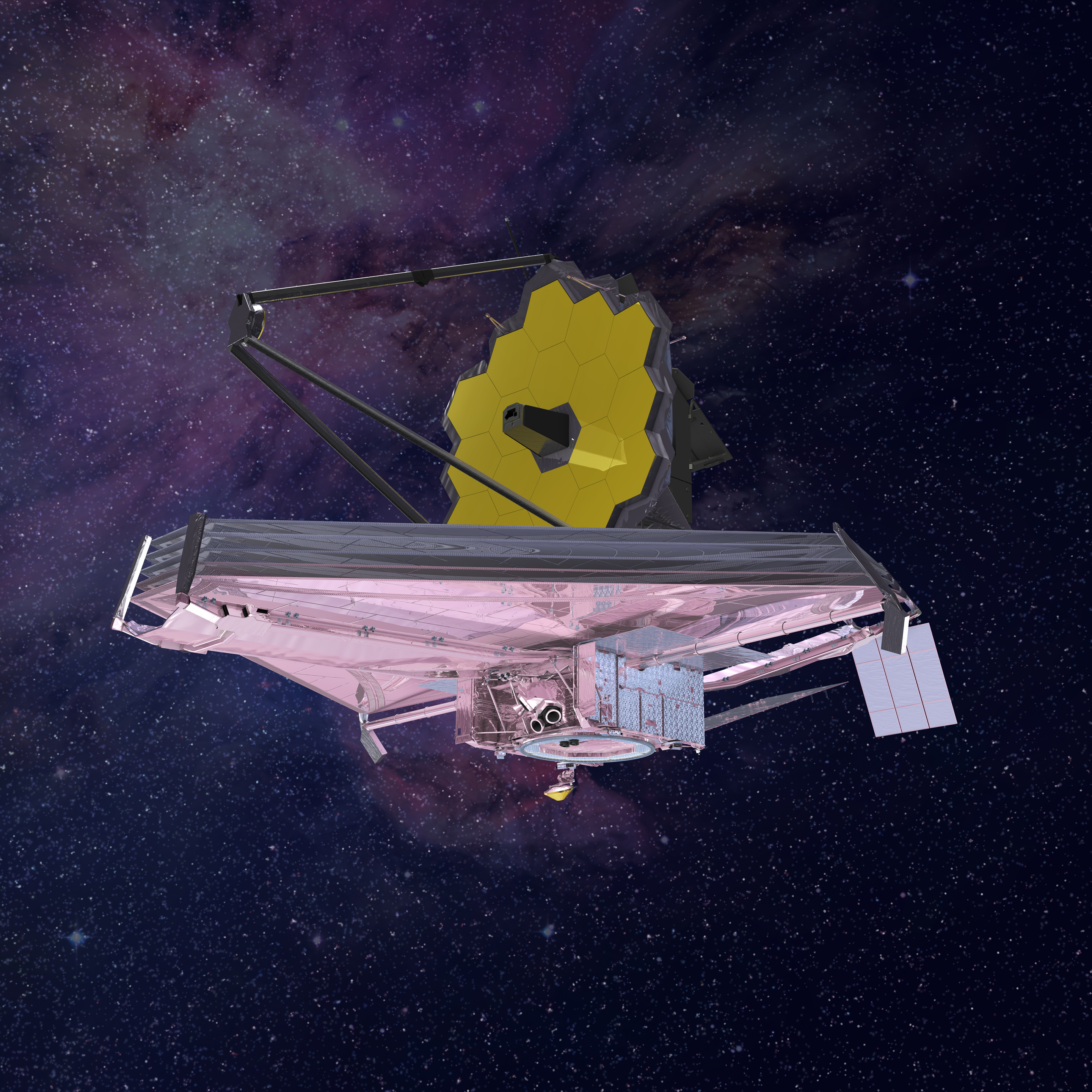1 min read
James Webb Space Telescope

Extended Description and Image Alt Text
Extended Description
The James Webb Telescope is seen from its left (or port) side. This view shows part of the bottom of the telescope’s multi-layered sunshield, which appears pink on the bottommost layer and is roughly shaped like an oblong hexagon. Above the pink layer of the sunshield are four thin gray layers, which also make up the telescope’s sunshield. They are in the same oblong hexagon shape as the pink layer.
The spacecraft bus is attached at the center of the bottom layer of the sunshield. It is a 3D square with a circle in the middle of it, and is less than a quarter of the sunshield’s length. The side of the square spacecraft bus is gray.
At the very back, or stern, edge of the telescope is another small gray square. This is the aft momentum flap, which helps steady the telescope against solar radiation pressure.
Extending from the middle of the square spacecraft bus is a long, horizontal solar power array. It extends slightly more than half the way to the back of the spacecraft, but from this angle it looks like it extends to the back edge of the sunshield.
Above that, most of the telescope’s primary mirror is visible. Its height is about half the width of its pink and gray sunshield layers.
The primary mirror is made up of 18 hexagonal segments that are coated in gold. Each are 1.32 meters (4.3 feet) in diameter, which, when properly phased together, act as a single mirror that is 6.6 meters (21.7 feet) in diameter.
At the very center of the primary mirror is a dark gray hexagonal shape that is approximately the same size as each gold-plated mirror segment. A gray cone extends outward from this area. It is known as the aft optical subsystem, which contains the telescope’s tertiary mirror and fine steering mirror. It is only slightly longer than the diameter of each mirror segment.
The 18 segments that make up the telescope’s primary mirror are outlined in medium gray. This gray area is known as the primary mirror backplane.
In front of the primary mirror are three thin, medium gray poles, known as mirror support struts. They extend to the front, or bow, of the telescope, but do not go beyond its sunshield. At the ends of the three struts, they form a point. This is the telescope’s secondary support mirror. The gray back of the mirror is visible.
Behind the primary mirror, seen only partially due to the angle, is the dark gray integrated science instrument module.
Image Alt Text
James Webb Telescope seen from its left (or port) side. This view shows part of the bottom of the telescope’s multi-layered sunshield, primary mirror, and mirror support struts.
- Release DateJune 15, 2017
- Science ReleaseIcy Moons, Galaxy Clusters, and Distant Worlds Among Selected Targets for James Webb Space Telescope
- CreditArtwork: NASA, ESA, CSA, Northrop Grumman
Share
Details
Laura Betz
NASA’s Goddard Space Flight Center
Greenbelt, Maryland
laura.e.betz@nasa.gov
NASA, ESA, CSA, Northrop Grumman






























